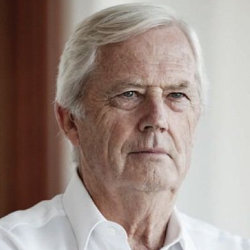Documents leaked to the ABC expose shocking rorting of taxpayer funding by the NSW Catholic school system with the approval of Catholic bishops. It is the latest in a long line of exposes about misuse of government funding by Catholic systems and which successive Coalition and Labor governments have meekly acquiesced to.
The new ABC analysis shows that NSW Catholic school authorities will have diverted more than $300 million in public funding from the system’s poorer to richer primary schools by 2023 to keep fees low in wealthy suburbs to maintain market share. The leaked documents show that schools in some of the wealthiest areas collect roughly one-third to half the fees parents at those schools are able to afford while fees in much poorer areas are set at two or three times above what those parents can afford.
Catholic education authorities have long denied the practice, but former Prime Minister Malcolm Turnbull has exposed this as a deliberate lie. In his memoirs, he recounted a conversation with the Archbishop of Sydney, Anthony Fisher, about the Government’s proposal to publish the amount of funding each school would receive under new funding arrangements. Fisher was concerned that this would reveal the Church’s cross-subsidisation of its schools in wealthy suburbs:
“…once you tell people how the government has assessed need and shown how much each school would get, we could never get away with it. People would say we were short-changing poor schools to benefit rich ones.”
People would have been right.
Fisher told Turnbull that the problem with the Government’s needs-based model was that “more funding would go to schools in the poorer outer suburbs of Sydney and country New South Wales”. So much for Catholic support for the poor! Fisher’s priority is to keep fees low for wealthy families. The wealthy should be supported at the expense of the poor according to the powerful Archbishop.
The ABC analysis shows that NSW Catholic education authorities have been diverting funding from poor to wealthy schools since 2015. But many government and other reports show it has been ongoing in NSW and other states since the Catholic system joined the Howard Government’s SES funding model in 2004.
In 2009, the National Audit Office found that systemic schools with low SES scores receive less Australian Government general recurrent grants per student from their school systems than if they were directly funded under the SES arrangements. It noted that the Department of Education didn’t even know how Catholic and other school systems distributed government funds to schools.
And nothing changed under the then Labor Government. In 2011, the Gonski report expressed concern about the lack of transparency of funding allocations in private school systems. It recommended that they should be obliged to disclose how government funding is distributed to member schools.
In 2016, a report of the Victorian Auditor-General found that the Catholic Education Commission of Victoria reallocated state government recurrent grants away from the lower socio-economic status schools to schools with a higher socio-economic status. A review of the NSW Catholic education system by Kathryn Greiner the same year found significant differences between the current funding of schools and the requirements of the Australian Education Act. It showed that schools in large city dioceses gained funding at the expense of poor schools in rural and remote areas.
Another report by the National Audit Office in 2017 found that many low SES Catholic schools were allocated significantly less funding by Catholic education authorities than their entitlement. It found that the Department of Education failed to ensure that school systems published their distribution model and did not check whether systems distributed funding according to need.
A comparison of funding of Catholic schools in affluent and poor areas of Melbourne by the Grattan Institute in 2017 found they were not funded according to need (Australian Financial Review, 21 May) It found that if Catholic schools were funded directly according to the Gonski needs-based distribution formula, “leafy green schools” would lose 42% of their funding while the poor schools receive an increase of 78%.
Similar comparisons of funding of Catholic schools in affluent and poor areas of Sydney and Melbourne by the Australian Financial Review in 2017 (14 May and 22 May) found they were not funded according to need. The analysis found that Catholic school authorities have directed millions of dollars of Commonwealth funding to wealthy schools at the expense of poor schools.
Save Our Schools has published several analyses over a decade on over-funding of wealthy Catholic and other private schools. One research paper found that almost all high SES Catholic combined and secondary schools in Australia were over-funded compared to their entitlement according to their SES score.
A decade after the first National Audit Office report nothing had changed. In 2019, a bi-partisan report of the Parliament’s Joint Committee of Public Accounts found that the Department of Education had failed to enforce its own legislation to ensure that school systems’ funding arrangements are publicly available and transparent and that systems distribute taxpayer funding to affiliated schools on a needs-basis.
Now the ABC has been sensationally leaked documents of the NSW Catholic school system showing how it continues to shift millions of taxpayer dollars intended for its schools in poor areas to schools in wealthy areas.
Catholic systems around Australia have got away with this for years despite the litany of revelations about their abuse of government funding. It is testimony to the power of the Catholic Church to obtain preferential funding agreements but ignore legislated requirements on how it distributes the funding.
There is some prospect for change. A recent report by the National School Resourcing Board also found there is insufficient transparency about how school systems distribute Commonwealth funding and that current reporting on school funding allocation and distribution is fragmented, inconsistent and incomplete. It said that their needs‑based funding arrangements should be publicly available and transparent:
“Transparency supports accountability and publicly available arrangements create an evidence base about different approaches which is valuable, especially when there is limited evidence explaining what constitutes an effective approach to respond to the variety of often competing needs of students and schools at a local level.” [p. 16]
The report recommended that the Government should identify instances where school‑level public funding distribution in a private school system varies significantly from the publicly funded share of the Schooling Resource Standard for the school. This is needed, it said, to support public confidence that the Government is monitoring the distribution of taxpayer funds to schools.
The Morrison Government has accepted the recommendations of the report. However, it remains to be seen whether there will be any effective action or change. Catholic education authorities have a long history of thumbing their nose at legislative requirements on needs-based funding and the Morrison Government does not have a good record either in challenging the Catholic Church. It quickly sued for peace when the Catholic Church ran a ruthless campaign against proposals by the Turnbull Government to make Catholic school funding arrangements more transparent.




